
حسام الدین شفیعیان
وبلاگ رسمی و شخصی حسام الدین شفیعیان
حسام الدین شفیعیان
وبلاگ رسمی و شخصی حسام الدین شفیعیانیک آیه از کتاب مکاشفه یوحنا
10. ساکنان زمین در مرگ آنان شادیها خواهند نمود و برای یکدیگر هدیهها خواهند فرستاد؛ زیرا که آن دو نبی ساکنان زمین را معذب ساخته بودند.

یک آیه از کتاب مکاشفه یوحنا
7. باری، همین که آنان شهادت خود را یکسره به انجام رسانند، آن وحش که از هاویه بیرون میآید، با آنان خواهد جنگید و بر آنان غالب شده، آنان را خواهد کشت.
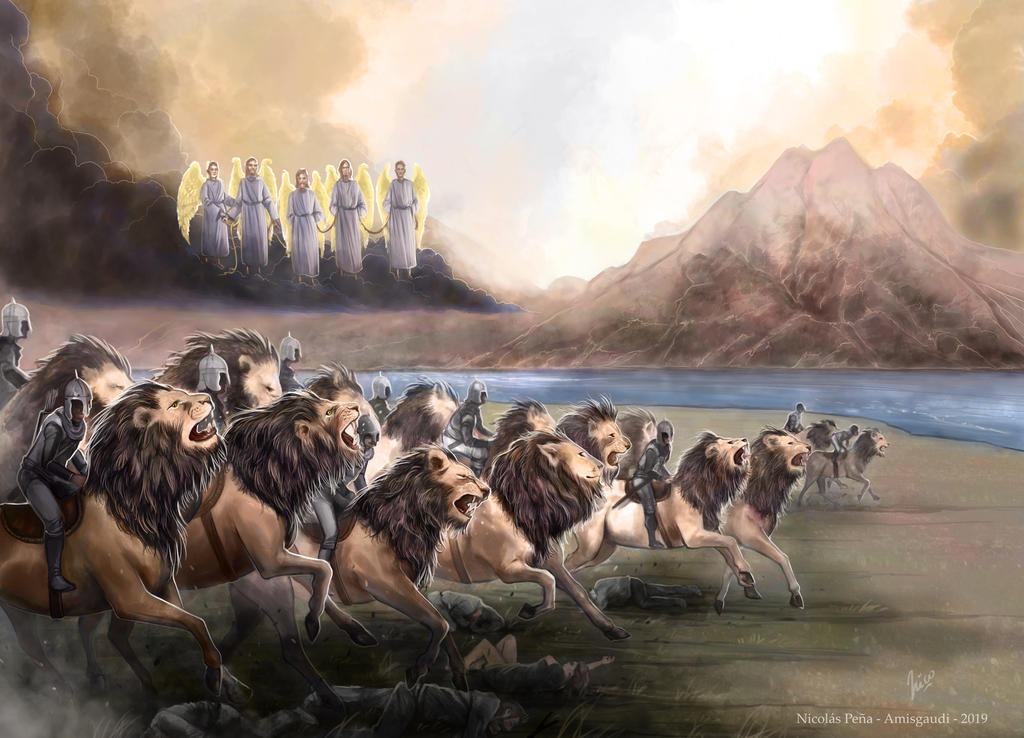
یک آیه از کتاب مکاشفه یوحنا
5. اگر کسی بخواهد آسیبی به آنها برساند، آتش از دهانشان زبانه میکشد و دشمنانشان را فرو میبلعد. این است طریق مردن هر کس که قصد آزار آنان کند.

.St. John the Evangelist.
Of the other New-Testament writings, it is only from the three Epistles of John and the Apocalypse that anything further is learned concerning the person of the Apostle. We may be permitted here to take as proven the unity of the author of these three writings handed down under the name of John and his identity with the Evangelist. Both the Epistles and the Apocalypse, however, presuppose that their author John belonged to the multitude of personal eyewitnesses of the life and work of Christ (cf. especially 1 John 1:1-5; 4:14), that he had lived for a long time in Asia Minor, was thoroughly acquainted with the conditions existing in the various Christian communities there, and that he had a position of authority recognized by all Christian communities as leader of this part of the Church. Moreover, the Apocalypse tells us that its author was on the island of Patmos "for the word of God and for the testimony of Jesus", when he was honoured with the heavenly Revelation contained in the Apocalypse (Revelation 1:9).
The Holy, Glorious All-laudable Apostle and Evangelist, Virgin, and Beloved Friend of Christ, John the Theologian was the son of Zebedee and Salome, a daughter of St Joseph the Betrothed. He was called by our Lord Jesus Christ to be one of His Apostles at the same time as his elder brother James. This took place at Lake Gennesareth (i.e. the Sea of Galilee). Leaving behind their father, both brothers followed the Lord.
The Apostle John was especially loved by the Savior for his sacrificial love and his virginal purity. After his calling, the Apostle John did not part from the Lord, and he was one of the three apostles who were particularly close to Him. St John the Theologian was present when the Lord restored the daughter of Jairus to life, and he was a witness to the Transfiguration of the Lord on Mount Tabor.
During the Last Supper, he reclined next to the Lord, and laid his head upon His breast. He also asked the name of the Savior’s betrayer. The Apostle John followed after the Lord when they led Him bound from the Garden of Gethsemane to the court of the iniquitous High Priests Annas and Caiphas. He was there in the courtyard of the High Priest during the interrogations of his Teacher and he resolutely followed after him on the way to Golgotha, grieving with all his heart.
At the foot of the Cross he stood with the Mother of God and heard the words of the Crucified Lord addressed to Her from the Cross: “Woman, behold Thy son.” Then the Lord said to him, “Behold thy Mother” (John 19:26-27). From that moment the Apostle John, like a loving son, concerned himself over the Most Holy Virgin Mary, and he served Her until Her Dormition.
After the Dormition of the Mother of God the Apostle John went to Ephesus and other cities of Asia Minor to preach the Gospel, taking with him his own disciple Prochorus. They boarded a ship, which floundered during a terrible tempest. All the travellers were cast up upon dry ground, and only the Apostle John remained in the depths of the sea. Prochorus wept bitterly, bereft of his spiritual father and guide, and he went on towards Ephesus alone.
On the fourteenth day of his journey he stood at the shore of the sea and saw that the waves had cast a man ashore. Going up to him, he recognized the Apostle John, whom the Lord had preserved alive for fourteen days in the sea. Teacher and disciple went to Ephesus, where the Apostle John preached incessantly to the pagans about Christ. His preaching was accompanied by such numerous and great miracles, that the number of believers increased with each day.
During this time there had begun a persecution of Christians under the emperor Nero (56-68). They took the Apostle John for trial at Rome. St John was sentenced to death for his confession of faith in the Lord Jesus Christ, but the Lord preserved His chosen one. The apostle drank a cup of deadly poison, but he remained alive. Later, he emerged unharmed from a cauldron of boiling oil into which he had been thrown on orders from the torturer.
After this, they sent the Apostle John off to imprisonment to the island of Patmos, where he spent many years. Proceeding along on his way to the place of exile, St John worked many miracles. On the island of Patmos, his preaching and miracles attracted to him all the inhabitants of the island, and he enlightened them with the light of the Gospel. He cast out many devils from the pagan temples, and he healed a great multitude of the sick.
Sorcerers with demonic powers showed great hostility to the preaching of the holy apostle. He especially frightened the chief sorcerer of them all, named Kinops, who boasted that they would destroy the apostle. But the great John, by the grace of God acting through him, destroyed all the demonic artifices to which Kinops resorted, and the haughty sorcerer perished in the depths of the sea.
The Apostle John withdrew with his disciple Prochorus to a desolate height, where he imposed upon himself a three-day fast. As St John prayed the earth quaked and thunder rumbled. Prochorus fell to the ground in fright. The Apostle John lifted him up and told him to write down what he was about to say. “I am the Alpha and the Omega, the beginning and the end, saith the Lord, Who is and Who was and Who is to come, the Almighty” (Rev 1:8), proclaimed the Spirit of God through the Apostle John. Thus in about the year 67 the Book of Revelation was written, known also as the “Apocalypse,” of the holy Apostle John the Theologian. In this Book were predictions of the tribulations of the Church and of the end of the world.
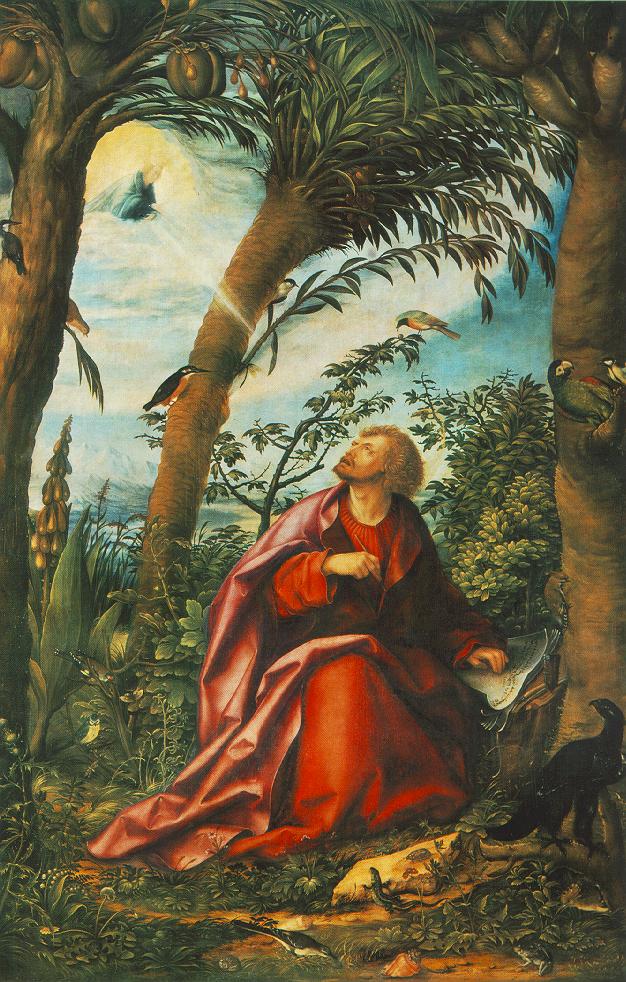
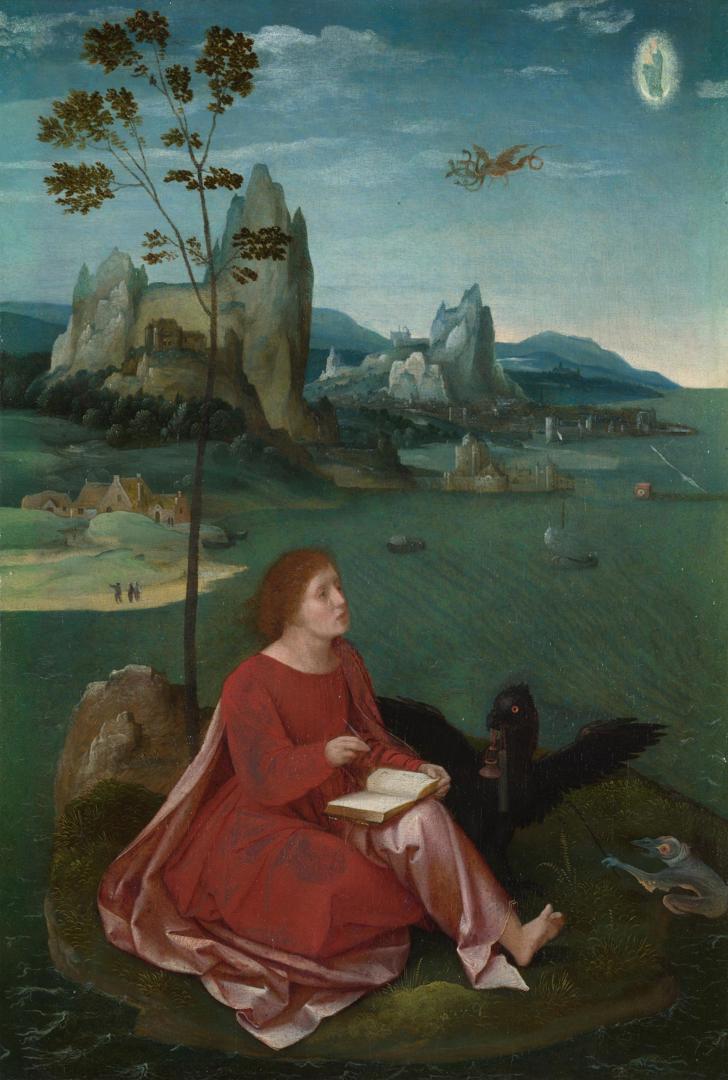
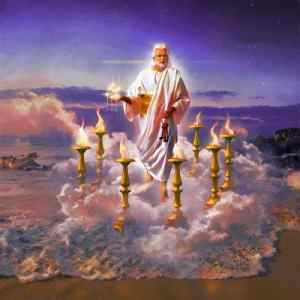



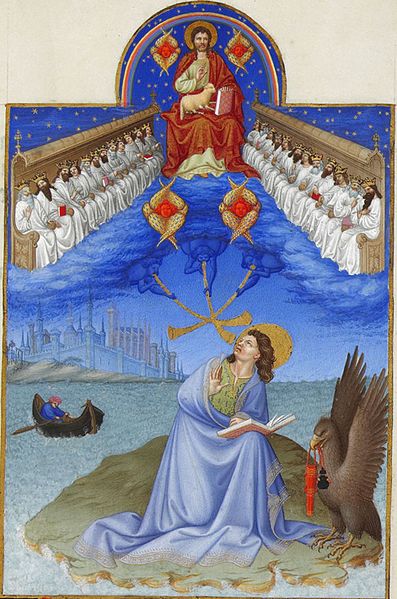

یوحنا رسول
یوحنای حواری که با نامهای یوحنای الهی و یوحنا پسر زبدی نیز شناخته میشود، یکی از دوازده حواری عیسی بود. سنت مسیحی او را با نویسندگان چندین اثر عهد جدید، از جمله انجیل یوحنا، می شناسد.According to the New Testament, John came from a family of fisherman. He became part of the core group of three disciples who witnessed certain key events in Jesus' ministry. As "the disciple whom Jesus loved," John is noted for his faith and loyalty to Jesus. However, together with Peter and James, John failed to keep watch and protect Jesus at the Garden of Gethsemane at a crucial moment in Jesus' ministry. Nevertheless, he alone among the Twelve is believed to have stood by Jesus at the Cross.
